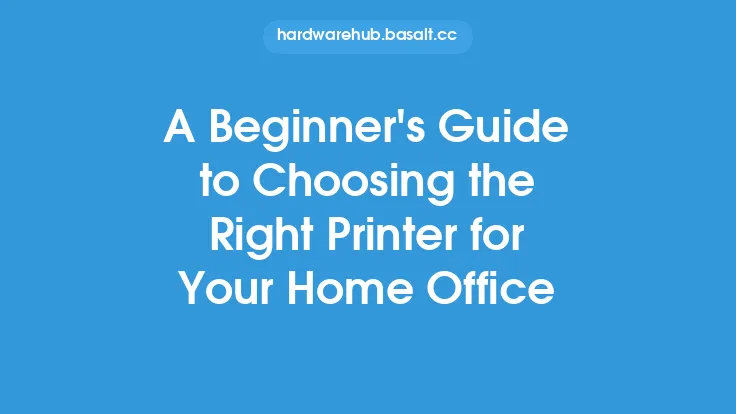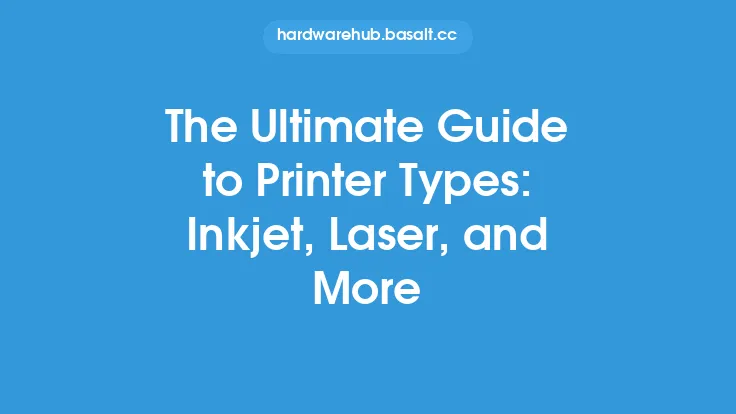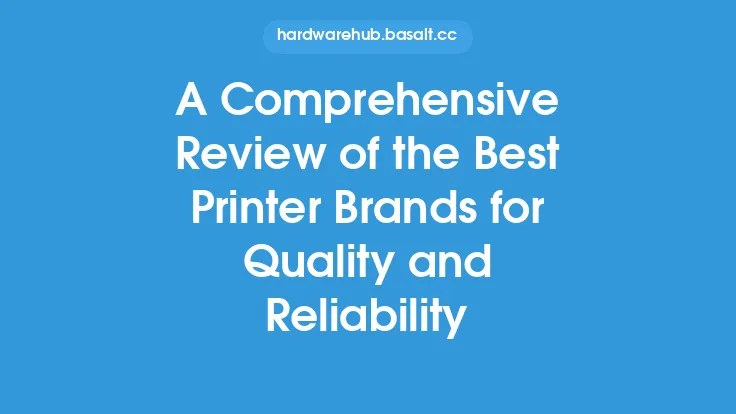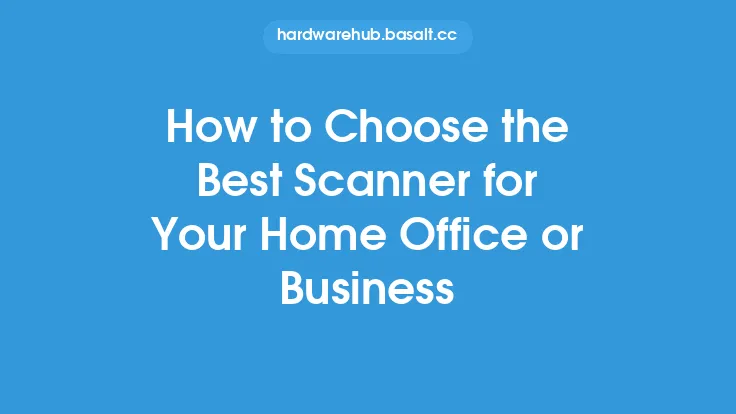When it comes to purchasing a printer, whether for home or business use, there are several factors to consider. The right printer can make a significant difference in productivity, efficiency, and overall printing experience. In this article, we will delve into the key considerations to keep in mind when buying a printer, helping you make an informed decision that meets your specific needs.
Types of Printers
The first step in choosing a printer is to determine the type of printer that suits your requirements. There are several types of printers available, including inkjet, laser, dot matrix, and 3D printers. Inkjet printers are ideal for home use, as they are affordable, compact, and capable of producing high-quality photos and documents. Laser printers, on the other hand, are better suited for business use, as they are faster, more efficient, and can handle high-volume printing. Dot matrix printers are typically used for specialized applications, such as printing receipts and invoices. 3D printers are used for creating three-dimensional objects and are commonly used in industries such as manufacturing and engineering.
Printing Resolution and Quality
Printing resolution and quality are crucial factors to consider when buying a printer. Printing resolution is measured in dots per inch (DPI), with higher DPI resulting in sharper and more detailed prints. For home use, a printer with a resolution of 4800 x 1200 DPI is sufficient for printing photos and documents. For business use, a higher resolution of 9600 x 2400 DPI or higher may be required for printing high-quality marketing materials and presentations. Additionally, consider the printer's color gamut, which refers to the range of colors it can produce. A wider color gamut results in more vibrant and accurate colors.
Paper Handling and Capacity
Paper handling and capacity are essential considerations, especially for business use. Look for a printer with a sufficient paper tray capacity to minimize the need for frequent refills. A printer with a capacity of 250-500 sheets is suitable for home use, while a business may require a printer with a capacity of 1000-2000 sheets or more. Additionally, consider the printer's paper handling features, such as automatic duplex printing, which allows for printing on both sides of the paper.
Connectivity and Compatibility
Connectivity and compatibility are vital factors to consider when buying a printer. Ensure the printer is compatible with your computer or mobile device's operating system. Most printers come with USB connectivity, but consider a printer with wireless connectivity, such as Wi-Fi or Bluetooth, for convenient printing from multiple devices. Additionally, look for a printer with mobile printing capabilities, such as AirPrint or Google Cloud Print, for printing from smartphones and tablets.
Cost and Maintenance
The cost of ownership is a critical factor to consider when buying a printer. Calculate the cost of ink or toner cartridges, as well as the cost of replacement parts, such as print heads and drums. Additionally, consider the printer's maintenance requirements, such as cleaning and calibration. A printer with a high yield and low maintenance requirements can help reduce costs and minimize downtime.
Speed and Performance
Speed and performance are essential considerations, especially for business use. Look for a printer with a high print speed, measured in pages per minute (PPM). A printer with a speed of 20-30 PPM is suitable for home use, while a business may require a printer with a speed of 50-100 PPM or more. Additionally, consider the printer's processing power, measured in megahertz (MHz), which affects the printer's ability to handle complex print jobs and multiple print requests.
Additional Features
Additional features can enhance the printing experience and improve productivity. Consider a printer with a built-in scanner, copier, and fax machine for a multi-function device. A printer with a touchscreen display and intuitive interface can make it easier to navigate and print documents. Additionally, look for a printer with security features, such as encryption and secure printing, to protect sensitive documents and data.
Warranty and Support
Finally, consider the printer's warranty and support options. Look for a printer with a comprehensive warranty that covers parts and labor for a reasonable period. Additionally, consider the manufacturer's support options, such as online resources, phone support, and on-site service. A manufacturer with a reputation for excellent customer support can provide peace of mind and minimize downtime in case of issues.
By considering these factors, you can make an informed decision when buying a printer that meets your specific needs and requirements. Whether for home or business use, the right printer can improve productivity, efficiency, and overall printing experience. Remember to research and compare different models, read reviews, and consult with experts to find the best printer for your needs.





